troy bilt pressure washer user manual
- by stephany

Welcome! This manual introduces you to the unique features of your new Troy-Bilt pressure washer‚ ensuring a seamless experience.
Following these instructions unlocks the potential of your 3000 PSI model‚ providing years of dependable service when properly maintained.
This guide details setup‚ operation‚ and maintenance‚ helping you maximize cleaning power and longevity‚ as described in available resources.
Locate your specific model’s manual online – Sears Parts Direct and other sources offer free downloads for various Troy-Bilt pressure washers.
Remember‚ consistent adherence to these guidelines guarantees optimal performance and extends the life of your valuable cleaning equipment.
Enjoy the power and convenience of your Troy-Bilt pressure washer‚ backed by comprehensive support and readily available documentation.
Understanding the Manual’s Purpose
This user manual serves as your primary resource for safely and effectively operating your Troy-Bilt pressure washer. It’s designed to guide you through every stage‚ from initial setup and operation to routine maintenance and troubleshooting common issues.
The core purpose is to ensure you understand the specific features of your model‚ preventing damage to the unit and‚ most importantly‚ ensuring your personal safety. Detailed instructions are provided for connecting water supplies‚ assembling components‚ and starting both gas and electric powered versions.
Furthermore‚ the manual outlines essential safety precautions‚ emphasizing responsible usage to avoid injury. It also details how to locate replacement parts and interpret parts diagrams‚ facilitating repairs and extending the lifespan of your pressure washer.
By carefully reviewing this manual before each use‚ you’ll unlock the full potential of your Troy-Bilt machine and enjoy years of reliable cleaning performance. It’s a commitment to responsible ownership and optimal results.
Safety Precautions
Prioritize safety! Always read and understand all instructions in this manual before operating your Troy-Bilt pressure washer. Never point the wand at yourself or others. Wear safety goggles to protect your eyes from debris and potential chemical splashback.
Ensure a stable footing while operating‚ and avoid using the pressure washer on slippery surfaces. Disconnect the power source (or fuel line for gas models) before performing any maintenance or repairs. Never alter the factory-set safety features.
Be mindful of electrical hazards – avoid using the pressure washer in wet conditions or near electrical outlets. Keep children and pets away from the operating area. Use only approved accessories and replacement parts.
High-pressure spray can cause serious injury; treat it with respect. Regularly inspect the hose for damage and replace it if necessary. Following these precautions will ensure a safe and productive cleaning experience.

Components and Features
Explore your Troy-Bilt! This section details the pressure washer’s parts‚ including the engine/motor‚ pump‚ hose‚ wand‚ and various nozzle attachments.
Understanding each component’s function maximizes cleaning efficiency and ensures proper operation‚ as outlined in the user manual.
Pressure Washer Overview
Your Troy-Bilt pressure washer is a powerful cleaning tool designed for a variety of outdoor tasks‚ from washing vehicles to revitalizing decks and siding. This overview provides a foundational understanding of its core functionality. The unit fundamentally operates by utilizing a high-pressure stream of water to dislodge dirt‚ grime‚ and other debris from surfaces.
Key components work in unison: the engine (in gas models) or motor (in electric models) powers a pump‚ which pressurizes the water drawn from a standard garden hose. This pressurized water then travels through a high-pressure hose to the wand and ultimately‚ the nozzle‚ delivering the cleaning force. Different nozzles offer varying spray patterns – from wide-angle for gentle cleaning to pinpoint jets for stubborn stains.
Understanding these basic principles‚ as detailed in your user manual‚ is crucial for safe and effective operation. Familiarize yourself with the location of essential controls‚ such as the power switch‚ pressure adjustment knob‚ and safety lock‚ before commencing any cleaning project. Proper operation ensures optimal performance and prolongs the lifespan of your Troy-Bilt pressure washer.
Nozzle Selection Guide
Choosing the correct nozzle is paramount for effective and safe pressure washing. Your Troy-Bilt pressure washer typically includes a selection of nozzles‚ each designed for specific cleaning applications. A 0-degree nozzle delivers a concentrated‚ powerful stream ideal for removing stubborn dirt and grime from durable surfaces – use with extreme caution!
A 15-degree nozzle offers a more moderate spray‚ suitable for concrete‚ brick‚ and similar materials. The 25-degree nozzle provides a wider spray pattern‚ excellent for cleaning siding‚ fences‚ and painted surfaces. A 40-degree nozzle is best for gentle cleaning of delicate surfaces like cars and boats.
Finally‚ a soap nozzle (often black or white) creates a low-pressure spray for applying detergents and cleaning solutions. Always consult your user manual for specific nozzle recommendations based on your cleaning task and surface type. Incorrect nozzle selection can damage surfaces or reduce cleaning effectiveness.
Hose and Wand Assembly
Proper assembly of the hose and wand is crucial for safe and efficient operation of your Troy-Bilt pressure washer. Begin by firmly connecting the high-pressure hose to the pressure washer pump outlet‚ ensuring a secure‚ leak-proof fit – hand-tighten‚ then use a wrench if needed.
Next‚ attach the wand to the other end of the high-pressure hose. Again‚ verify a tight connection to prevent blow-offs during use; Most wands feature a quick-connect mechanism for easy nozzle attachment. Select the appropriate nozzle for your task and firmly push it onto the wand until it clicks into place.
Before starting the pressure washer‚ inspect all connections for tightness and damage. Never operate the unit with a loose or damaged hose or wand. Refer to your user manual’s diagrams for visual guidance on correct assembly procedures.
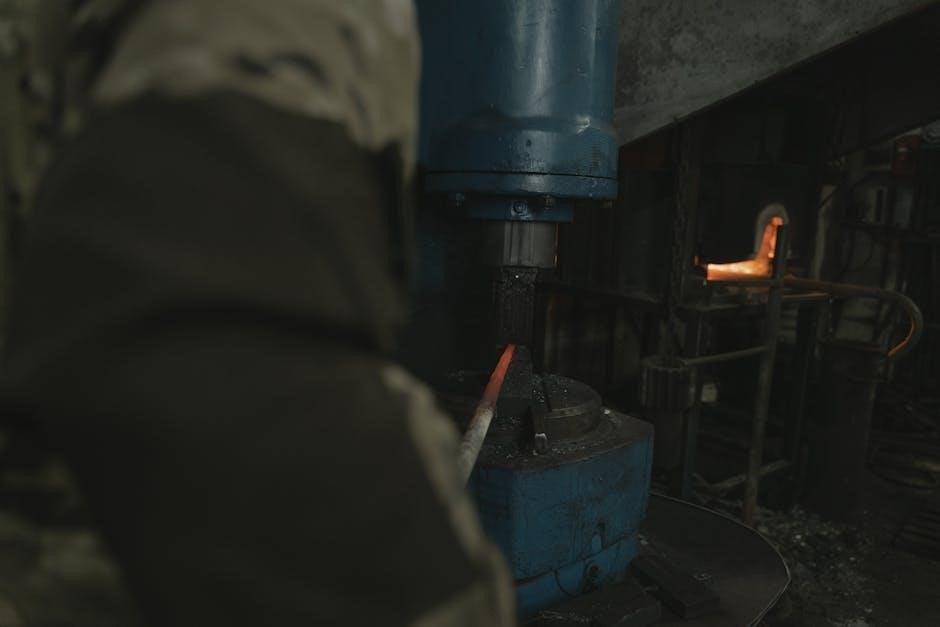
Setting Up Your Pressure Washer
Preparation is key! Connect the water supply and pressure hose‚ then add oil (gas models) following the manual’s detailed instructions for optimal performance.
Ensure secure connections before operation.
Connecting the Water Supply
Crucially‚ before starting your Troy-Bilt pressure washer‚ a reliable water supply must be established. Connect the provided water inlet adapter to a standard garden hose‚ ensuring a tight‚ leak-proof connection. Always use a hose of sufficient length to reach your water source comfortably‚ avoiding kinks or obstructions that could reduce water flow.
Check the water source for debris or sediment‚ as these can damage the pump. Consider using a hose filter for added protection. Once connected‚ fully open the water supply valve to allow water to flow freely into the pressure washer. Never operate the unit without water‚ as this can cause severe damage to the pump components.
Refer to your specific model’s manual for detailed diagrams and instructions regarding water supply connection‚ as variations may exist. Proper water connection is fundamental for safe and effective operation.
Connecting the Pressure Hose
Carefully connect the high-pressure hose to the pressure washer’s outlet port. Ensure a secure‚ hand-tight connection‚ often requiring a specific quick-connect fitting. Do not use tools to tighten the hose‚ as this can damage the fittings; Before fully securing‚ inspect the hose for any signs of damage‚ such as cracks or abrasions; replace if necessary.
Next‚ attach the spray wand or gun to the other end of the high-pressure hose‚ again ensuring a firm‚ hand-tight connection. Always verify that all connections are properly locked before starting the pressure washer to prevent leaks and potential injury.
Consult your Troy-Bilt model’s manual for specific diagrams illustrating the correct hose connection procedure. A properly connected hose is vital for safe and efficient operation‚ delivering the necessary pressure for effective cleaning.
Adding Oil (Gas Powered Models)
Before the initial start-up‚ and for regular maintenance‚ adding oil is crucial for gas-powered Troy-Bilt pressure washers. Refer to your specific model’s manual to determine the correct oil type and capacity – typically a 10W-30 engine oil is recommended. Locate the oil fill cap‚ usually marked with an oil can symbol.
Remove the dipstick‚ wipe it clean‚ reinsert it fully‚ and then remove it again to check the oil level. Add oil gradually‚ checking the level frequently to avoid overfilling. Ensure the oil level falls within the “full” range indicated on the dipstick.
Always use a funnel to prevent spills and avoid contact with hot engine parts. Regularly check the oil level before each use‚ and change the oil according to the maintenance schedule outlined in your owner’s manual.
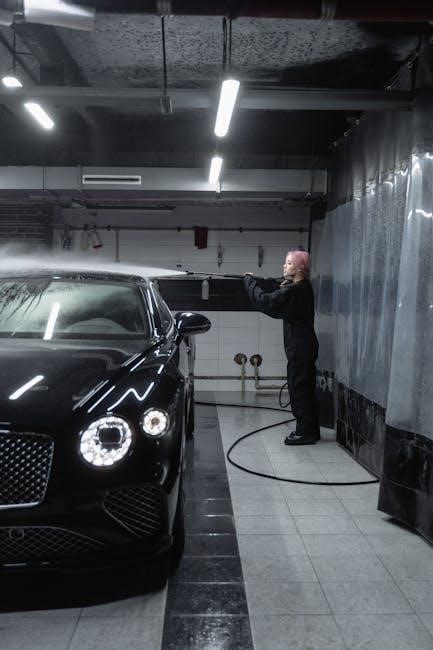
Operating Instructions
Follow the manual’s detailed steps for starting your Troy-Bilt model – gas or electric. Adjust pressure settings carefully for various cleaning tasks‚ maximizing efficiency.
Always prioritize safety and proper technique when operating this powerful cleaning equipment‚ ensuring optimal results and longevity.
Starting the Engine (Gas Models)
Before attempting to start your gas-powered Troy-Bilt pressure washer‚ ensure the oil level is correct and the fuel tank contains fresh gasoline. Confirm the engine switch is in the “OFF” position. Slowly turn the fuel valve to the “ON” position‚ allowing fuel to flow to the carburetor.
Next‚ set the choke lever to the “START” or “CHOKE” position – this enriches the fuel mixture for cold starts. Gently pull the starter rope with a smooth‚ controlled motion. Avoid pulling the rope all the way out‚ and allow it to retract slowly. Repeat this process several times until the engine attempts to start.
Once the engine sputters or shows signs of starting‚ gradually move the choke lever to the “RUN” position. Continue pulling the starter rope until the engine runs smoothly. If the engine fails to start after several attempts‚ consult the troubleshooting section of your manual. Always operate the pressure washer in a well-ventilated area.
Starting the Motor (Electric Models)
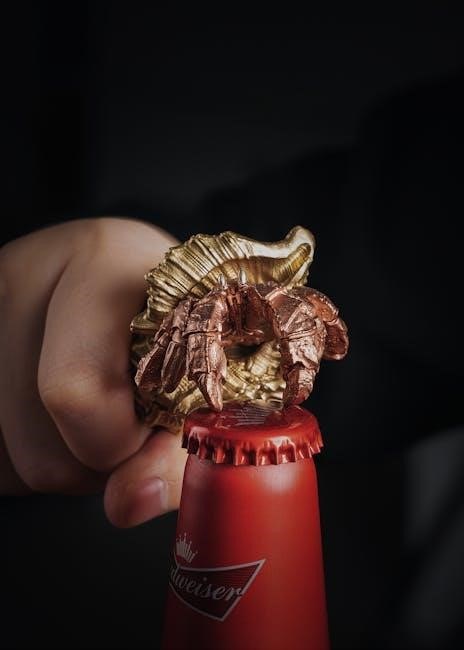
Before starting your electric Troy-Bilt pressure washer‚ ensure it’s connected to a properly grounded outlet with the correct voltage – typically 120V. Verify the power switch is in the “OFF” position. Inspect the power cord for any damage before plugging it in; never operate with a damaged cord.
Turn the power switch to the “ON” position. Listen for the motor to engage; it should start almost immediately. If the motor doesn’t start‚ check the circuit breaker or fuse box to ensure the outlet is receiving power. Avoid using extension cords if possible‚ but if necessary‚ use a heavy-duty‚ outdoor-rated cord.
Once the motor is running‚ allow it to stabilize for a few seconds before engaging the spray gun trigger. Never leave the pressure washer unattended while it’s running. Refer to the manual for specific instructions related to your model’s safety features.
Adjusting Pressure Settings
Troy-Bilt pressure washers often feature adjustable pressure settings‚ allowing you to tailor the cleaning power to the task. Locate the pressure adjustment knob or dial – its position varies by model‚ so consult your manual. Turning the knob typically adjusts the unloader valve‚ controlling water pressure;
Lower settings are ideal for delicate surfaces like painted wood or car finishes‚ preventing damage. Higher settings are suitable for tougher jobs like concrete or heavily soiled surfaces. Start with the lowest setting and gradually increase it until you achieve the desired cleaning effect.
Experiment on an inconspicuous area first to test the pressure. Remember that nozzle selection also impacts cleaning power; a wider nozzle reduces pressure‚ while a narrower nozzle increases it. Always prioritize safety and avoid using excessive pressure that could cause harm.
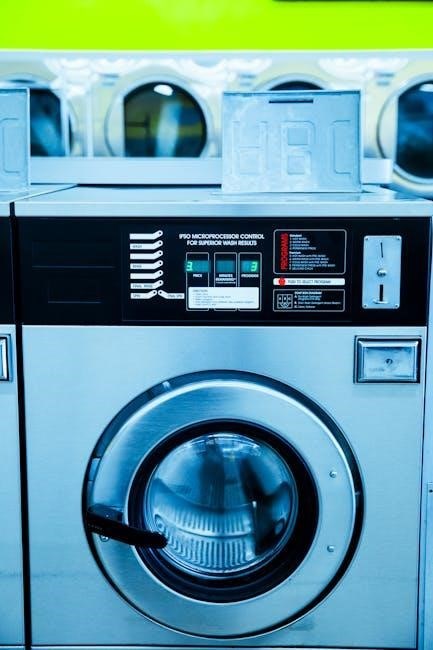
Maintenance and Care
Regular maintenance ensures optimal performance and extends the life of your Troy-Bilt pressure washer‚ as detailed in the user manual.
Consistent cleaning‚ oil checks (gas models)‚ and proper winterization are crucial for dependable service.
Cleaning the Nozzles
Maintaining clean nozzles is vital for consistent and effective pressure washing performance with your Troy-Bilt unit. Over time‚ mineral deposits and debris can accumulate within the nozzle orifices‚ restricting water flow and diminishing cleaning power.
To clean the nozzles‚ first‚ disconnect the pressure washer from both the water supply and the power source (or engine). Then‚ carefully remove the nozzle from the wand assembly. Use a thin wire‚ such as a paperclip or nozzle cleaning tool (often included with your unit)‚ to gently dislodge any obstructions from the nozzle opening.
Avoid using sharp objects that could damage the nozzle’s internal components. After removing debris‚ rinse the nozzle thoroughly with clean water to flush out any remaining particles. Inspect the nozzle for any signs of wear or damage‚ and replace it if necessary. Regularly cleaning your nozzles – ideally after each use – will ensure optimal spray patterns and maximum cleaning efficiency‚ extending the lifespan of your Troy-Bilt pressure washer.
Checking the Oil Level (Gas Models)
Maintaining proper oil levels is crucial for the longevity and performance of your gas-powered Troy-Bilt pressure washer. Always check the oil level before each use‚ and after every five hours of operation. Ensure the engine is cool and on a level surface.
Locate the oil dipstick‚ typically marked with a bright color. Remove the dipstick‚ wipe it clean with a lint-free cloth‚ and reinsert it fully into the oil reservoir. Then‚ remove the dipstick again and observe the oil level. The oil should be between the “Min” and “Max” marks on the dipstick.
If the oil level is low‚ carefully add the recommended oil type (refer to your manual for specifications) until it reaches the “Max” mark. Avoid overfilling‚ as this can damage the engine. Regularly checking and maintaining the correct oil level ensures smooth operation and prevents costly repairs‚ maximizing the life of your Troy-Bilt pressure washer.
Winterizing Your Pressure Washer
Proper winterization is essential to protect your Troy-Bilt pressure washer from freezing temperatures and potential damage. Before storing for the winter‚ completely drain all water from the pump‚ hose‚ and wand. Disconnect the water supply and run the engine briefly to expel any remaining water within the system.
For gas models‚ stabilize the fuel or drain the fuel tank to prevent fuel degradation during storage. Change the oil before storage‚ ensuring fresh oil is present for the next season. Remove the spark plug and add a tablespoon of engine oil into the cylinder‚ then slowly pull the starter cord to distribute the oil;
Store the pressure washer in a dry‚ protected location‚ ideally indoors. Covering it will further safeguard against dust and debris. Following these steps ensures your Troy-Bilt pressure washer is ready for reliable service when spring arrives.
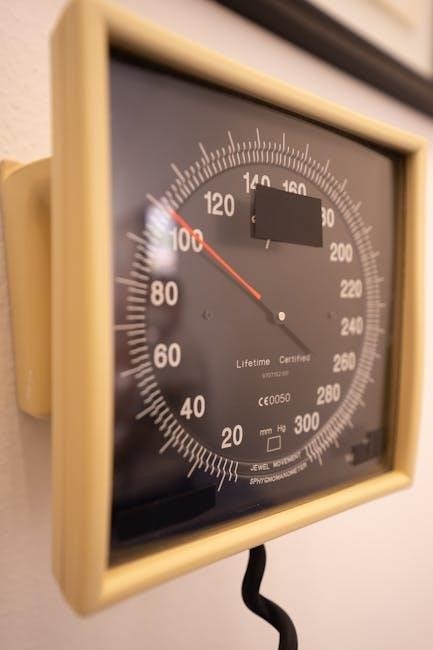
Troubleshooting Common Issues
Addressing problems like engine failure‚ low pressure‚ or leaks is crucial for maintaining optimal performance. Consult your manual for detailed solutions.
These resources offer guidance on diagnosing and resolving common issues‚ ensuring your Troy-Bilt pressure washer operates efficiently.
Engine Won’t Start (Gas Models)
If your gas-powered Troy-Bilt pressure washer fails to start‚ several factors could be at play. First‚ verify the fuel tank isn’t empty and that the fuel shut-off valve (if equipped) is open. Check the oil level – a low oil level activates a safety mechanism preventing startup; refer to your manual for proper oil type and quantity.
Inspect the spark plug for fouling or damage; a clean‚ properly gapped spark plug is essential for ignition. Ensure the choke is engaged correctly‚ especially during cold starts‚ and disengaged once the engine warms up. Confirm the ignition switch is in the “on” position.
If the engine cranks but doesn’t fire‚ the carburetor might be clogged‚ requiring cleaning or professional servicing. Consult your owner’s manual for specific troubleshooting steps and diagrams related to your model. Always disconnect the spark plug wire before performing any maintenance to prevent accidental starting.
Low Pressure Output
Experiencing reduced cleaning power? Several issues can cause low pressure with your Troy-Bilt pressure washer. First‚ check the nozzle for clogs – mineral deposits can restrict water flow. Remove and clean all nozzles thoroughly‚ using a nozzle cleaning tool or a fine wire. Verify the water supply is fully open and provides adequate volume and pressure.
Inspect the high-pressure hose for kinks‚ bends‚ or damage; these can impede water delivery; Ensure the hose is securely connected to both the pump and the spray gun. Check the pump inlet filter for debris and clean it if necessary.
If the problem persists‚ the pump itself may require servicing. Consult your owner’s manual for detailed troubleshooting and potential repair options. Avoid running the pump dry‚ as this can cause significant damage.
Water Leaks
Discovering water leaks? Addressing them promptly prevents damage and maintains optimal performance of your Troy-Bilt pressure washer. First‚ inspect all hose connections – ensure they are tight and properly secured. Check the high-pressure hose for cracks or punctures; replace it if damaged. Examine the pump connections and the spray gun for any signs of leakage.
Tighten any loose fittings‚ but avoid over-tightening‚ which can strip threads. Inspect the water inlet connection to the pump for leaks; ensure the water supply hose is securely attached. Look closely at the pump itself for cracks or signs of internal leakage.
If leaks persist‚ consult your owner’s manual for specific troubleshooting steps or contact a qualified service technician. Never operate the pressure washer with significant leaks‚ as this can be dangerous.

Parts Diagrams and Replacement
Locate diagrams online via Sears Parts Direct and other resources to identify components. Replacement parts are readily available‚ ensuring easy repairs and continued operation.
Understanding these diagrams simplifies maintenance and helps you order the correct parts for your Troy-Bilt pressure washer.

Locating Replacement Parts
Finding replacement parts for your Troy-Bilt pressure washer is straightforward‚ ensuring you can maintain its optimal performance for years to come. A primary resource is Sears Parts Direct‚ which offers a comprehensive catalog of parts‚ diagrams‚ and manuals specifically tailored to Troy-Bilt models.
You’ll need your pressure washer’s model number to accurately identify the correct components. This number is typically found on a sticker affixed to the machine’s housing. Once you have the model number‚ you can search Sears Parts Direct’s website or contact their customer support for assistance.
MTD Products‚ the parent company of Troy-Bilt‚ also provides parts and support through their official website. Additionally‚ many online retailers specializing in outdoor power equipment carry Troy-Bilt replacement parts. When ordering‚ always double-check the part number and compatibility with your specific model to avoid any issues.
Local hardware stores and authorized Troy-Bilt service centers may also stock common replacement parts‚ offering a convenient option for immediate needs. Remember to keep a record of your purchases for warranty purposes and future reference.
Understanding Parts Diagrams
Troy-Bilt pressure washer parts diagrams are invaluable tools for identifying components and understanding how your machine is assembled. These diagrams‚ readily available on websites like Sears Parts Direct and the MTD Products website‚ provide a visual representation of each part‚ labeled with a corresponding part number.
Each diagram typically depicts an exploded view‚ showcasing how the parts fit together. Familiarize yourself with the key components – the engine (for gas models)‚ pump‚ hose‚ wand‚ nozzles‚ and various connectors. Pay close attention to the orientation and positioning of each part.
Part numbers are crucial for accurate ordering. Diagrams often include a parts list alongside the visual representation‚ linking each labeled item to its unique identifier. When ordering replacements‚ always verify the part number matches your specific model to ensure compatibility.
Understanding these diagrams empowers you to perform repairs and maintenance confidently‚ saving time and money. Utilize these resources alongside your user manual for a comprehensive understanding of your Troy-Bilt pressure washer.

Warranty Information
Troy-Bilt stands behind the quality of its pressure washers with a comprehensive warranty program. Specific warranty terms vary depending on the model and date of purchase‚ so carefully review the warranty statement included with your unit. Generally‚ the warranty covers defects in materials and workmanship for a defined period.
The warranty typically differentiates between residential and commercial use‚ with commercial applications often having shorter coverage durations. It’s crucial to register your pressure washer promptly after purchase to activate the warranty. Keep your proof of purchase‚ as it’s required for any warranty claims.
The warranty generally does not cover items damaged through misuse‚ neglect‚ improper maintenance‚ or normal wear and tear. Always adhere to the operating and maintenance instructions outlined in this user manual to maintain warranty validity.
For detailed warranty information and claim procedures‚ visit the official Troy-Bilt website or contact their customer support team; Retain this manual for future reference regarding your warranty rights.
Related posts:
Can’t find your Troy-Bilt pressure washer manual? We’ve got you covered! Easy downloads to get your machine running & blasting grime. Find your **manual** now!
Posted in Manuals